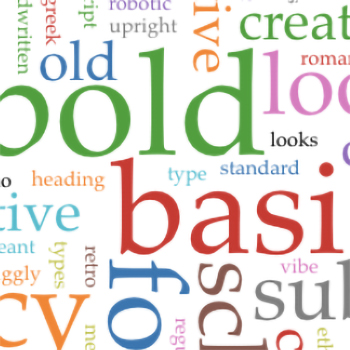The process of choosing a suitable font is challenging. There are numerous options to browse and select from. MyFonts website, one of the top digital font distributors, currently reports it has more than 133,000 fonts available. Google Fonts has a repository of 1462 open-source font families. Even an average computer running Microsoft Office has 164 standard fonts installed. Previously, access to typography was traditionally limited to typographers, designers, or specialists. Now in the post-digital era, access to fonts has risen significantly, which has led to the democratisation of type. Not only expert designers but also non-experts, i.e., novice users without design training, can access graphic design tools like Canva, Adobe Express, and font libraries by aggregators like Google Fonts and Adobe Fonts, which provide users access to thousands of fonts. Font search and selection can be especially difficult for non-designers because of the overwhelming number of options available. They may not be familiar with the classification terminologies associated with typefaces or the role they play in design. Thus, studying their interaction with font search menus becomes an important activity in user interface design. This project aims at studying the font search and selection strategies of non-expert users—with a focus on the usability of font search menu organisations (font classification), understanding how users decide the appropriateness of fonts and the relationships they associate with them.


